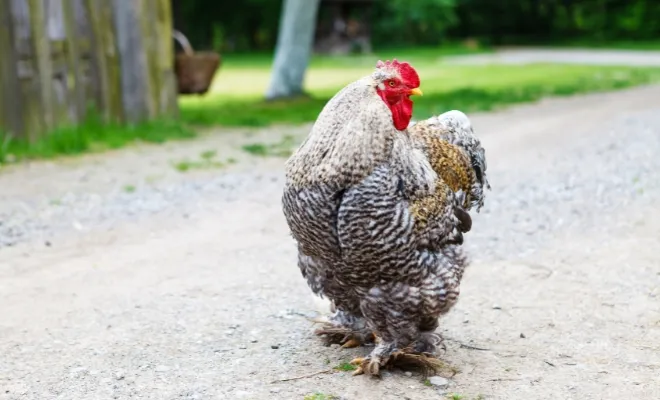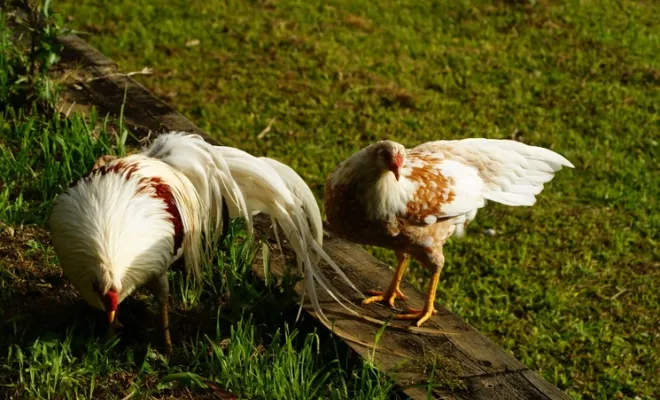Celadon Quail Breed – Everything That You Need To Know

The Celadon Quail Breed is a fascinating bird with a unique color called celadon. It’s like a soft, pale blue or green combination!
These little charmers lay delicious, nutritious eggs in a breathtaking robin’s egg blue. These petite birds are surprisingly hardy and low-maintenance. However, this breed is excellent for both backyard flock beginners and experts. You can find these colorful birds in places like grassy meadows and forests.
Their appearance is genuinely captivating and adds a touch of magic to nature. Discover more surprising facts about them in the main section. Let’s learn more about these exciting creatures!
Table of Contents
Celadon Quail Breed Short Profile
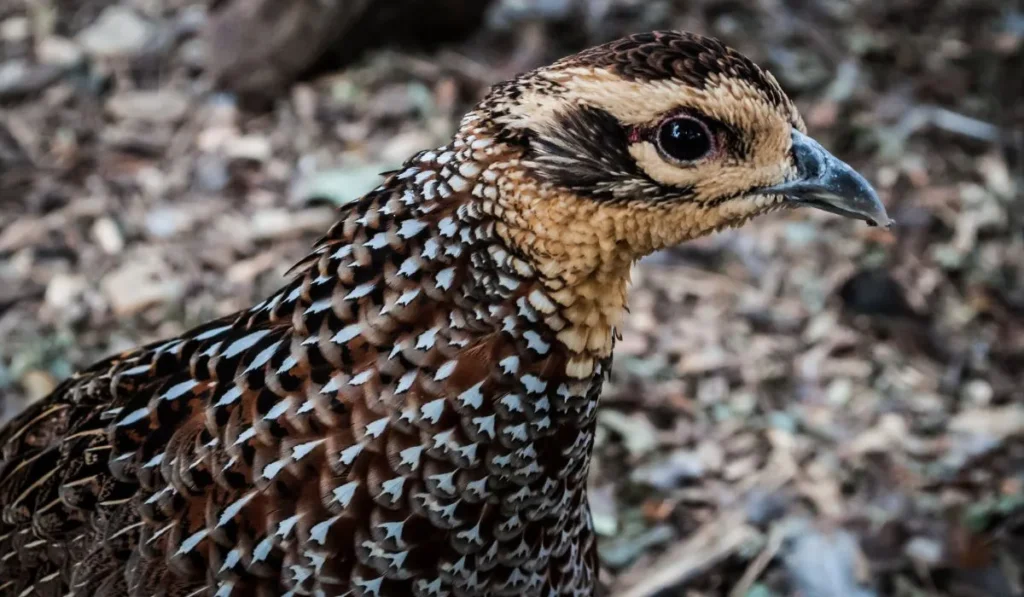
Discover the characteristics of the Celadon Quail in the following breed profile.
| Feature | Description |
|---|---|
| Scientific Name | Coturnix japonica (Variety of Coturnix Quail) |
| Size | 6-7 inches tall |
| Plumage | Soft brown, gray, and buff with white markings |
| Eggs | Robin’s egg blue |
| Temperament | Calm, docile, skittish at first |
| Egg Laying | 3-4 eggs per week, year-round |
| Care | Secure enclosures, quail-specific diet, dust baths, hiding spots |
| Challenges | Flight risk, potential noise, small egg size |
History And Location Of Celadon Quail Breed

The exact history of their development is a little confusing. However, researchers have found the Celadon quail comes from East Asia and is linked to wild quails in Southeast Asia.
People in Asia liked them for their pretty looks and special blue eggs since the 12th century. People thought they brought good luck.
Journey to the West
In the 1900s, Celadon quails traveled to Europe and North America. People there were amazed by their blue eggs and started breeding them. Now, these quails are loved worldwide by bird lovers. They’re gentle and cute, and their eggs are still a hit.
Adapting Everywhere
Celadon quails feel at home in many places, from Europe and North America to their original homes in Asia. People in China, Japan, and Southeast Asia still enjoy breeding them. The Celadon quail is here to stay, making people happy all around the world.
Physical Appearance of Celadon Quail Breed
Let’s learn more about Celadon quails and what makes them special.
Size, Looks, And Feather Colors
Celadon quails are about 6-7 inches tall, like dainty ballerinas compared to bigger chickens.
While Celadon Quail Breed eggs are vibrant turquoise, they wear more muted colors. Their feathers come in soft browns, grays, and buffs with white markings, blending in with nature.
- Males: Brighter browns with hints of chestnut.
- Females: Cooler tones, with browns leaning towards gray.
Unique Features
Celadon quails have distinctive traits that make them special:
- Crown Jewel: Short, rounded heads with a crown of delicate white feathers.
- Button Eyes: Large, expressive eyes in shades from dark brown to almost black.
- Petite Beaks: Short, pointed beaks for delicately picking up seeds. It shows their gentle nature.
Variety in the Flock
Most Celadon quails follow a similar pattern. However, some have more white markings or a warmer or cooler tone. This diversity makes each quail a unique masterpiece in the flock.
Celadon Quail Breed and 7 Personality Assessment

Don’t let their delicate size and eggshell’s breathtaking hue fool you; Celadon quails are more than just pretty faces. Know their personalities first and then judge them with proper knowledge.
Let’s explore the personality of Celadon Quails and what makes them unique.
Gentle Companions
Celadon quails are small in size and temperament, making them gentle and delightful companions, especially suitable for families with children.
Social Birds
These quails are social creatures, often seen in lively groups. They enjoy each other’s company, bringing a sense of liveliness to your backyard or aviary.
Low-Maintenance Friends
Great for beginners, Celadon quails are easy to care for, making them perfect for busy families just starting with birds.
Curious Explorers
Celadon quails have a curious side, exploring their surroundings and pecking at the ground. Their curious activities are entertaining for bird enthusiasts.
Adaptable Avian Friends
Whether in a backyard or an aviary, Celadon quails adapt well to different environments, making them versatile avian companions.
Feathered Personalities
Each Celadon quail has its own personality; some are outgoing, and others are a bit shy. Observing their unique personalities adds charm to having them as companions.
Vocal But Not Noisy
While not silent, Celadon Quails’ vocalizations are far from loud. Their chirps and calls, from soft cooing to excited trills, create a delightful soundtrack to your backyard.
Reproduction And Breeding Of Celadon Quail Breed
If you want to know about Celadon Quail breeding time, here are the facts I am sharing. And ensure you follow my tips for breeding.
How long does it take for a Celadon quail to hatch?
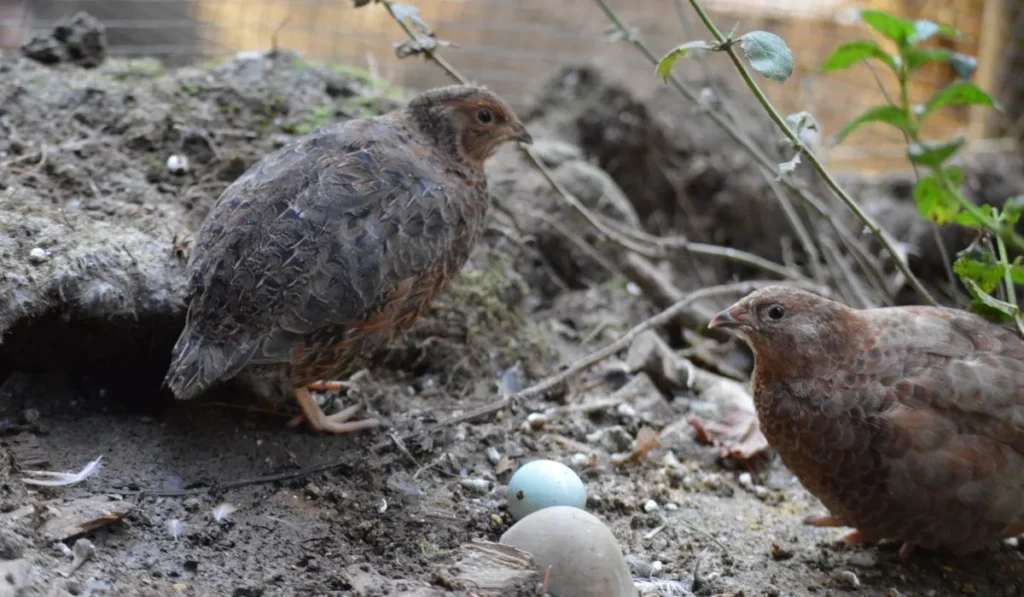
Celadon quails have beautiful blue eggs, and their Harlequin relatives look different but are also charming. What’s interesting is both types take about 15 days for their eggs to hatch.
So, soon enough, you’ll see adorable baby quails coming out of those pretty blue shells!
How to breed Celadon quails? 4 Key facts!
To build a happy Celadon quail family, follow these tips:
- Perfect Space as a Home: Make sure their home is big enough. Around 4 square feet per bird is good. Use strong fencing to keep them safe.
- Cozy Nesting Boxes: Give them cozy boxes with soft bedding for laying eggs. This helps them feel safe and comfy.
- Proper Diet: Feed them a balanced diet with lots of protein and calcium. Quail feed and fresh greens keep them healthy and happy.
- Be Patient: Let them take their time bonding and building their family. Keep their environment calm and quiet for better family planning.
How many eggs do Celadon quails lay?
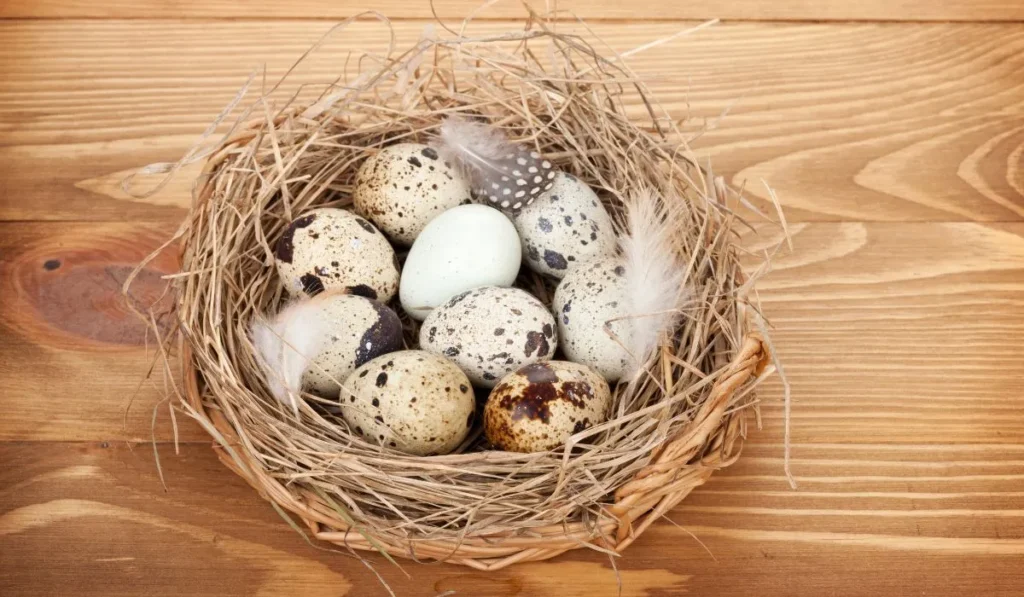
Celadon quails lay a lot of eggs around 3 to 4 per week, all year round, even in cold places. That means you’ll always have these tiny, beautiful eggs in your fridge.
Which color eggs do Celadon quails lay?
The reason these eggs are so special is in the quails’ name. Celadon quails lay eggs in a stunning robin’s egg blue color. According to the NCBI study, a new color variation in Japanese quail eggs is called “celadon.” A recessive gene controls this trait.
What Purpose Does Celadon Quail Breed Serve the Best for?
Celadon quails bring something special for various purposes. Here’s why they stand out in different areas:
Poultry Purpose
Laying 3-4 eggs weekly is quite beneficial for the poultry owners. While smaller than chicken eggs, they’re great for unique recipes like deviled eggs or small pastries.
Another fact is that Celabon Quail eggs are quite healthy and impact differently. MDPI confirms that eggshell color can impact egg quality and biological value. Blue-shelled eggs from pheasants showed higher lysozyme activity.
As Backyard Friends
Their calm nature makes them great for small spaces and cities. They get friendly with gentle handling, need less food, and produce less waste than bigger poultry. Their curiosity and chirping add charm to any backyard.
However, their potential for noise during mating season may not suit everyone. Additionally, their smaller eggs might not fit recipes expecting standard chicken eggs.
For Hobbies
People love the vibrant eggs and the easy breeding. Some even work on preserving and bringing back this unique breed to their natural homes.
How To Raise Celadon Quail Breed?
It’s essential to be prepared for the needs of Celadon quails. Here’s a guide to help you raise your feathered friends like a pro:
Housing and Enclosure
Aim for at least 4 square feet per bird in their enclosure. Larger is always better, as they love to run and explore.
Make sure your enclosure is escape-proof with sturdy fences and a roof. Quails are excellent fliers and will gladly take advantage of any weaknesses.
Provide shelters, dust bathing areas, and hiding spots for them to feel safe and secure. Nesting boxes are crucial if you plan on breeding.
Regularly clean their enclosure and nesting boxes to maintain good hygiene and prevent disease.
Diet and Nutrition
Quail-specific feed, supplemented with fresh greens, vegetables, and fruits, is ideal. Ensure access to grit or pebbles for proper digestion.
Always provide fresh, clean water at all times. And feed them twice a day in the morning and evening.
Care and Handling
Quails are delicate birds, so handle them with care and always support their body.
Start taming them early by offering treats from your hand and speaking softly to them. They can become quite tame with regular interaction.
Observe your quails regularly for any signs of illness or injury. Consult a veterinarian if you have any concerns.
For Breeding
Introduce potential breeding pairs gradually and monitor their compatibility. Provide separate roosting areas until they bond.
Offer secluded nesting boxes with soft bedding for laying eggs. Ensure your quails are receiving a balanced diet and optimal lighting to promote fertility.
Note: Keep an eye out for any signs of illness or distress. Promptly address any health concerns to maintain a thriving flock.
You can see the video for some additional tips!
Pros And Cons of Having Celadon Quail Breed
If you intend to get some flock of Celadon Quail, here are things you must keep in mind. Understand the good and bad facts, and then you go to collect them or for your purpose.
Pros of Keeping Celadon Quail
- They lay unique robin’s egg blue eggs, making your egg collection extra special.
- A great egg layer! They can give you 3-4 fresh and nutritious eggs.
- Their calm nature makes them perfect for small backyards or urban areas.
- They need less food and produce less waste, making them easy for new poultry keepers.
- Celadon Quails are curious and chirp softly, bringing charm to your backyard or aviary.
Cons of Keeping Celadon Quail
- Their eggs are smaller than chicken eggs, so some may not prefer to have them.
- They might try to fly, so make sure their home is secure to prevent escapes.
- They make some noise, especially during breeding, which might be a concern in close living spaces.
- Breeding them needs specific conditions, and preserving their unique egg color can be challenging.
- While popular among hobbyists, they may not be as common in stores as other types of poultry.
2 Unique Facts About Celadon Quail Breed
Celadon Quails are special! Here are some unique facts:
- Strong fliers require secure enclosures with roofs.
- Celadon Quails can be an eco-friendly choice for bird enthusiasts.
Related Articles:
- Coturnix Quail Breed For Small-Scale Farming
- Italian Silver Quail Breed
- Blue Scale Quail Breed
- All About King Quail Breed
Conclusion
The Celadon Quail Breed is famous for laying beautiful robin’s egg blue eggs. These small wonders bring joy to families through their calm nature and entertaining chirps. They lay 3 to 4 eggs a week and ensure a constant supply.
On the other hand, Celadon Quails are easy to care for, making them excellent companions in small spaces. While they might attempt to fly, securing their home ensures their safety. And be sure you provide all the necessities Celadon Quails needs to grow.


